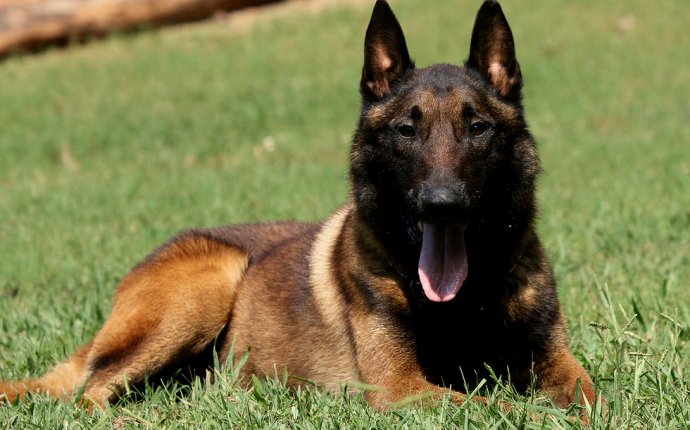
Belgian Malinois Breeders in Belgium
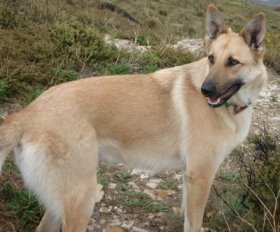
Other Names
Belgian Shepherd Malinois
Malinois
Chien de Berger Belge
Mechelse Shepherd
Description
The Belgian Malinois has a body that is often described as square, as that is the shape it appears to have when the legs and topline are viewed from the side. The chest is deep. The topline is level, sloping slightly at the withers. The overall size of the head is in proportion to the body. The skull is flat with the width and length being of the same distance. The muzzle is somewhat pointed and equal in length to the top of the skull with a moderate stop. The nose is black and so are the tight lips. The teeth meet in a scissors or level bite. The medium sized, almond-shaped eyes are brown. The erect ears are triangular in shape. The tail is strong at the base with the bone reaching to the hock.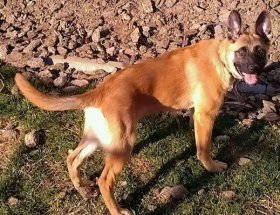 The feet are cat-like in shape. Dewclaws may be removed. The weather resistant, double-coat is short and straight. The coat color comes in rich fawn to red to mahogany to black, with black tips on the hairs. The mask and ears are black. Underneath the body, the tail and back end are a lighter fawn. The hair around the neck looks like a collar, as it is slightly longer.
The feet are cat-like in shape. Dewclaws may be removed. The weather resistant, double-coat is short and straight. The coat color comes in rich fawn to red to mahogany to black, with black tips on the hairs. The mask and ears are black. Underneath the body, the tail and back end are a lighter fawn. The hair around the neck looks like a collar, as it is slightly longer.
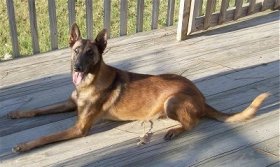 Temperament
Temperament
The Belgian Malinois is one of four Belgian sheepdogs. A very bright and obedient dog, it is determined and observant with strong protective and territorial instincts. Socialize well to prevent it from becoming shy or sensitive. The Belgian Malinois needs an experienced master who is firm, but not heavy handed. If you are harsh or overbearing it will become uncooperative. Owners need to display a confident, natural authority over the dog. Consistent rules must be set and made clear. This breed is instinctively protective so it should be trained and socialized very well from an early age. Puppies should be socialized right from birth. Good for working and competition obedience, these dogs make excellent police and guard dogs. This type of work is currently their main occupation. They do however, make excellent pets if they have owners who can challenge their minds with an air of leadership. They are ever watchful, alert and loyal. The Belgian Malinois is good with children if socialized well with them. This breed needs to be part of the family and not locked up in a kennel. They need leadership, daily exercise along with training and companionship, for without it they may become destructive and hard to handle. The Belgian Malinois is high energy, with a high mental capacity, and is quick to comprehend. It needs a job to do, especially if you are dealing with working lines. Take care when introducing this dog with small non-canine pets. It can be rather dominant toward other dogs and need an owner who can communicate to the dog that dominance is an unwanted behavior.
The Belgian Malinois is good with children if socialized well with them. This breed needs to be part of the family and not locked up in a kennel. They need leadership, daily exercise along with training and companionship, for without it they may become destructive and hard to handle. The Belgian Malinois is high energy, with a high mental capacity, and is quick to comprehend. It needs a job to do, especially if you are dealing with working lines. Take care when introducing this dog with small non-canine pets. It can be rather dominant toward other dogs and need an owner who can communicate to the dog that dominance is an unwanted behavior.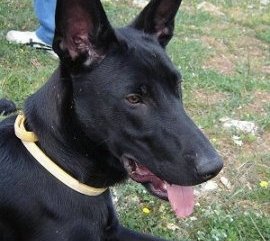 Provided it is correctly socialized with cats and other pets, it should not present any problems. The Belgian Malinois may instinctively display herding behavior such as chasing and circling, moving effortlessly for hours and nipping at people's heels. They must be taught not to do this to people. This is a very demanding dog. It needs an experienced owner for it can easily be difficult to control unless the owner knows how to handle him. The way the owner handles the dog can produce wide differences in temperament and aggressiveness. Talk to someone experienced with the breed before you buy your dog. These dogs are often impressive; don't base your purchase solely on achievement records and appearances. Only adopt this type of dog if you fully understand what it means to be alpha.
Provided it is correctly socialized with cats and other pets, it should not present any problems. The Belgian Malinois may instinctively display herding behavior such as chasing and circling, moving effortlessly for hours and nipping at people's heels. They must be taught not to do this to people. This is a very demanding dog. It needs an experienced owner for it can easily be difficult to control unless the owner knows how to handle him. The way the owner handles the dog can produce wide differences in temperament and aggressiveness. Talk to someone experienced with the breed before you buy your dog. These dogs are often impressive; don't base your purchase solely on achievement records and appearances. Only adopt this type of dog if you fully understand what it means to be alpha.









